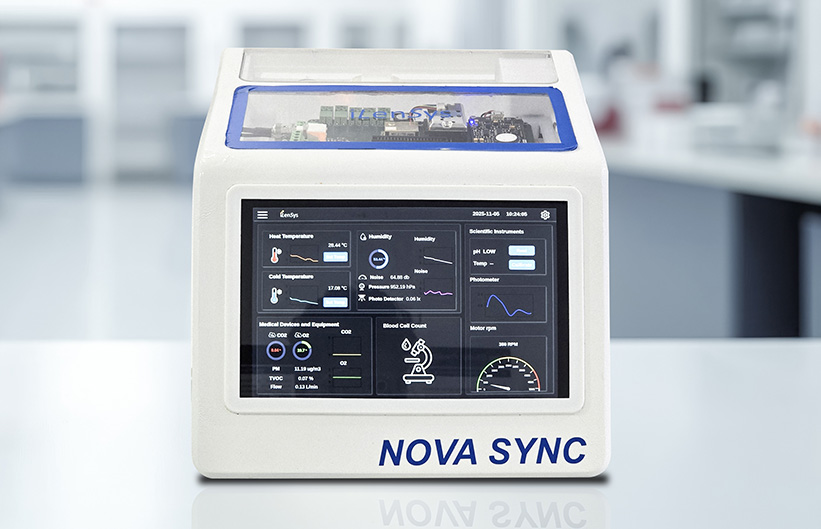Abstract:
The materials are essential for critical performance of electronic products. Disposal of some of these materials, however, poses a serious threat to the environment after end of- life of the product. The European Union and other developed countries have already enacted legislative measures as Restriction of Hazardous Substances (RoHS) Directive to restrict the use of certain substances in the manufacturing of the electronic products. India has also notified similar legislation on 12th May 2011 to address this serious issue. Indian electronic manufactures are however facing serious challenges due to this legislative restriction.
Industry needs testing and certification of admissible level of hazardous substances in the product for necessary compliance. The testing facilities available with few private laboratories are not adequate. Department of electronics and Information Technology, Government of India, has therefore created a state-of-art laboratory with modern analytical instruments to address the growing demand of the industry. This article provides an overview of the RoHS and other related legislative measures present in the world and in India. An attempt is also made to study the preparedness of the industry and the immediate impact on the business of electronic sector.
Introduction:
RoHS is the acronym for Restriction of Hazardous Substances. RoHS, also known as Directive 2002/95/EC, originated in the European Union and restricts the use of specific hazardous materials found in electrical and electronic products.
Hazardous substances which are present in certain EEE. These substances may pose risks to human health and the environment. Therefore, it is imperative that legislative action is taken globally–in most cases, action has been taken–to restrict the use of hazardous substances in EEE to effectively manage them and minimize their risks. This Regulatory Alert provides an overview of the EU RoHS Regulation and its implications, which supplements this Regulatory Alert, compares, and takes a deeper look into the key RoHS Regulations in various countries/regions.
Uses of RoHS Substances:
When RoHS goes into effect, manufacturers of electronic equipment for the EU marketplace must be compliant. The regulations do not recognize or grant any leeway to foreign manufacturers or suppliers.
One of the surveys show that the usage of lead, cadmium and mercury has considerably reduced in the EU, because of RoHS.
.
How to comply with RoHS requirements?
RoHS could be a product level compliance supported the EU Union's Directive 2011/65/EU & 2015/863, the Restriction of the employment of sure risky Substances in Electrical and Electronic equipment (RoHS). Products compliant with this directive don't exceed the allowable amounts of the subsequent restricted materials: lead, mercury, cadmium, hexavalent metallic element, polybrominated biphenyls (PBB) and polybrominated diphenyl ethers (PBDE), with some restricted exemptions.
This directive applies to makers, approved representatives, importers, and distributors of product together with massive social unit appliances (refrigerators, etc.), little social unit appliances (vacuum cleaners, etc.), computing & communications instrumentation, client physical science, lighting, power tools, toys and equipment (videogames, electrical trains, etc.) and automatic dispensers (vending machines, ATM machines, etc.)
How will RoHS affect my company?
RoHS Upcoming updates:
The European Commission has proposed adding two new substances to the restricted substance list: tetrabromobisphenol A (TBBPA) and medium-chain chlorinated paraffins (MCCPs). Adding TBBPA and MCCPs would increase the number of restricted substances under EU RoHS from 10 to 12.
• TBBPA is a flame retardant commonly used to reduce the flammability of plastics and synthetic resins in consumer products, including electrical and electronic equipment parts. It is being considered as an addition to the restricted substances list due to its potential to harm human health, as it is a known carcinogen.
• MCCPs are industrial chemicals often used as flame retardants or plasticizers in plastics, rubber, adhesives, paints, and more. They are also used in metal operations as lubricants or coolants. MCCPs are being considered as an addition to the restricted substances list because they are expected to be bio-accumulative and are considered toxic to the environment by some agencies.
Starting in Europe, RoHS-like regulations are now being developed worldwide. The scope, the listed hazardous substances, and their applicable exemptions differ from one market to another. This is the case of the Eurasian Economic Union (Russia RoHS), the United Arab Emirates (UAE RoHS), Turkey RoHS, California RoHS, and other states and countries. Unlike Europe RoHS, some countries like the United Arab Emirates RoHS request external audits.
Conclusion:
RoHS regulations play an important role in encouraging the elimination of 10 hazardous substances. Medical devices, medical equipment and EEE products need to comply with RoHS regulations.
References:
https://ec.europa.eu/environment/pdf/waste/weee/hazardous_substances_report.pdf
Author:
Pavani Muriki, Senior Compliance Engineer
iLenSys Technologies Pvt. Ltd.
Please Enter your Business Email to download the WhitePapers
ilensys needs the contact information you provide to us to contact you about our products and services. You may unsubscribe from these communications at any time. For information on how to unsubscribe, as well as our privacy practices and commitment to protecting your privacy, please review our Privacy Policy.
Talk to ours Product Environmental Compliance Experts.
By submitting this form, I agree to receive emails about iLenSys's products and services as per the Terms of Use. I can unsubscribe at any time via the 'unsubscribe' link in iLenSys emails or by emailing contact@ilensys.com. I also agree to the Privacy Policy.
Sign up for the latest Blogs, Case studies, Whitepapers, Webinars and Videos.
- Blogs
- Case Studies
- News and Updates
- Videos
- Webinars
- White Papers
-
- Product Environmental Compliance
- Obsolescence Management
- Regulatory & Product Safety
-
-
-
-
-
-
- New Product Development
- Mechanical Design
- FEA Validation
- Benchmarking and Value Engineering
- 3D Scanning and Reverse Engineering
- 3D Printing
-
- Embedded Systems
-
- Industrial Automation
-
- Quality Assurance and Regulatory Affairs
-
- Extended Reality
- 3D Animation & Video Production
- WebGL Development
- Graphics and UI/UX Reality
-
- Technical Documentation
-
- Early Engineering Talent (EET)
-
-
-
- Lab Equipment
- Medical Devices and Equipment
-
- Scientific Instruments
-
- Life Sciences
-
- Static and Mobile Equipment
-
- Material Handling Equipment
-




